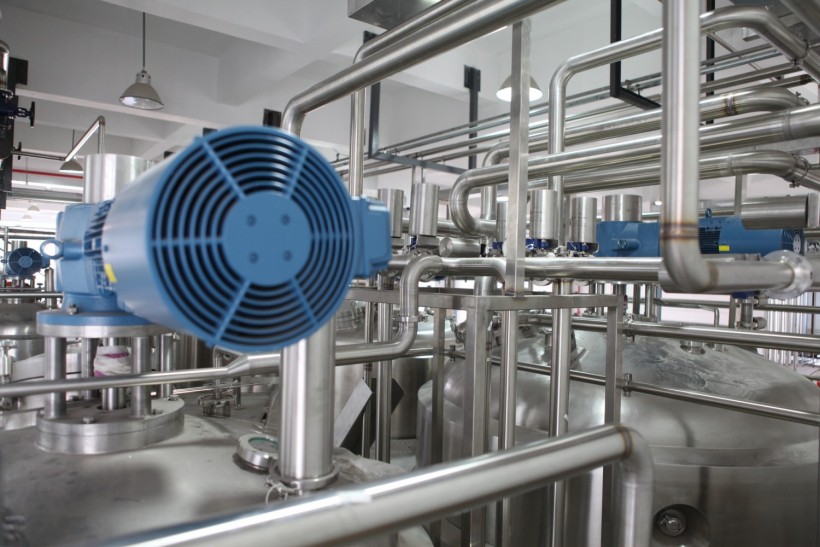Continuous improvement and adaption to technological and societal advances are key factors to keep a competitive advantage in any industry. These developments are especially important for industrial equipment manufacturers, as they drive the technological advantages of other industries as well. Here are some trends that will influence and better the equipment manufacturing industry in 2022 and beyond.
Trend Reports and Analyses for the Industrial Equipment Manufacturing Industry
There are several institutions that regularly collect and analyze industry data to create trend reports for the industrial equipment manufacturing industry.
The Association of Equipment Manufacturers often releases white papers for equipment manufacturers and the industries using their products. Here, they carve out important trends for the future of equipment manufacturing and helpful insights to increase the businesses' success.
Another good resource are the documents created by the European Commission's Sectoral Watch concerning the Advanced Technologies for Industry. In the past years, they have described:
-
the industrial context of the sector,
-
technological trends,
-
venture capital investments,
-
startup creation,
-
the demand of related skills, and
-
a future outlook including challenges and opportunities, as well as
-
the disruptions and consequences created by the Covid-19 pandemic.
As in many industries in 2022, these papers focus strongly on the implementation of AI and automated processes, as well as increased environmental safety and protection.
Challenges & Opportunities
Manufacturing will be facing challenges in the coming years. With the right strategies, they can be turned into opportunities. The two most prominent factors are the changes connected to creating sustainable practices and implementing digital technologies:
Environmental Challenges
The effects on the environment caused by emissions from industries, as well as pressure from customers, suppliers, and the general public, make the management and optimization of the creation and release of Greenhouse gases into the atmosphere a necessity of increasing importance.
The use of diesel fuel, electricity, and other resources like water and chemical components, needs to be examined and improved upon, to minimize the use of valuable commodities and limit the release of damaging components into the environment.
This applies to the equipment manufacturing industry itself, as well as the machines and technology they produce. Industries like the medical sector and their laboratories need to work with many electrical machines to guarantee the uninterrupted precision and ideal conditions for their processes. That's why environments like these use a significantly larger amount of energy than regular office buildings of a similar size.
That is why they should be looking to reduce their waste of resources as efficiently as possible. Strategies for this measure can be found in selecting the right industrial chiller manufacturer for their temperature management systems, for example, whose machines regulate temperatures energy-efficient and environmentally safe, while reducing their own footprint as much as possible.
Technological Trends
Digital technologies and the Internet of Things (IOT) are getting implemented in production lines and other industry processes more frequently. Complex systems, including:
-
sensors,
-
network connections,
-
algorithms, and
-
smart analysis capabilities,
make it possible to automate entire supply chains and projects.
This does not necessarily need to be a threat to the workers. By handing menial tasks to machines, the qualified staff has time for more important core tasks, or professional training to aid their personal and the business's growth.
At the same time, the digitalization will reduce things like human error, work many tasks faster and with more precision, and can lead to a higher level of connection and communication between different company, partner, and client points of interest. Processes can be worked more efficiently and any handovers at junctions can be smoothed over, leading to a higher overall quality and satisfaction.
It isn't just the production processes and supply chains that can benefit from digital technologies. Businesses in any industry can profit from using new tools like staff management software. These dedicated programs are used to automate and simplify many necessary but menial tasks, like calculating payrolls, tracking time, and planning shifts. By using these methods, companies can further optimize their internal processes, cut losses, and increase their revenue.
Conclusion
Many industry reports can give helpful insights to equipment manufacturing industries. Here, we can find explorations of the current industry context, the challenges they faced and will face, and which trends will help them overcome issues and stay relevant.
A big focus in the coming years will continuously be put on environmental protection, the reduction of emissions and waste of resources. Additionally, while our world is becoming increasingly digital, manufacturing industries can benefit from these technologies as well. Management software and IOT-Systems can help them make their business more efficient, reduce costs, and increase revenue.
* This is a contributed article and this content does not necessarily represent the views of sciencetimes.com











!['Cosmic Glitch' in Einstein's Theory of General Relativity Could Be Explained in This New Scientific Tweak [Study]](https://1721181113.rsc.cdn77.org/data/thumbs/full/53435/258/146/50/40/cosmic-glitch-in-einsteins-theory-of-general-relativity-could-be-explained-in-this-new-scientific-tweak-study.jpeg)



